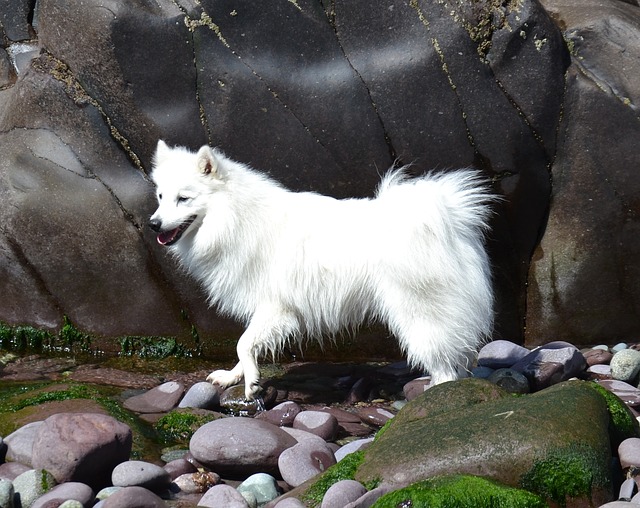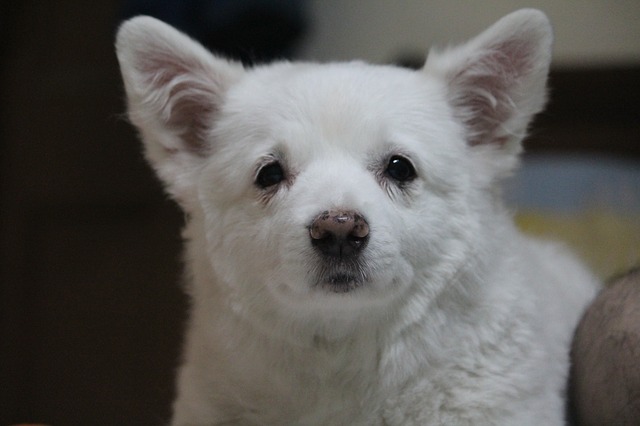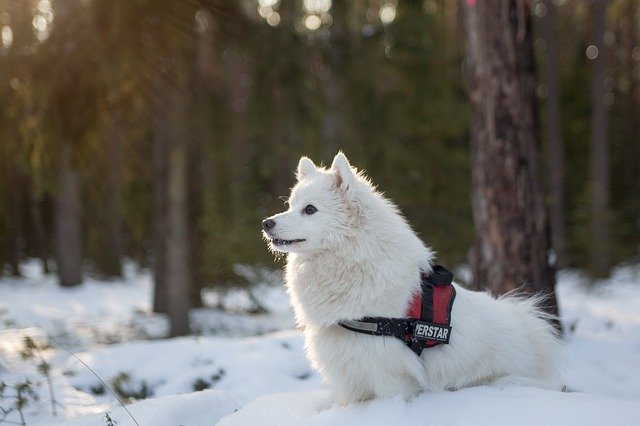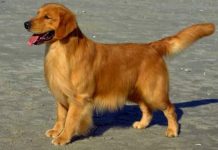The Japanese Spitz is gentle, shaggy and white, it looks a lot like a reduced Samoyed. Great dog for the apartment, it is clean, has no characteristic odor. It is a good choice for families with children.
Description
It is a small dog, which looks a lot like a reduced Samoyed. It has straight hair, with a thick and very fine undercoat of extremely white color. His hair is almost ruffled, which gives this puppy an almost fluffy look. The eyes are always dark in color, moderately large, almond-shaped. The nose, mouth and eyelids are black.
The ears are set high, triangular in shape, upright and turned slightly forward. He has a moderately long neck, as muscular as the rest of his body. The chest is large and quite deep for a dog of this size, the stomach is retracted. The average height of a Japanese spitz is about 33 cm, and the weight varies between 5 and 10 kg.
Temperament
He is a very intelligent and loyal dog. He is cheerful and cheerful in nature, extremely loyal to the owner and distrustful of strangers. Although he is small in stature, he is considered a good and brave guardian. It is an excellent pet for families with children because it will be extremely gentle towards them. It is not difficult for training, but it is necessary to establish dominance over it in order to avoid the small dog syndrome. He learns quickly, reacts best to dressage with the help of rewards.

Health
Due to its small size, he can live in an apartment without any problems, but he must be provided with regular walks and physical activities. His hair is not too demanding to care for, but it needs daily brushing. Although white in color, this dog stays clean for quite a long time, bathing is recommended only when it is absolutely necessary. It sheds moderately, has no characteristic odor. There are no known genetic diseases characteristic of this race.
Care
Keep the Japanese Spitz strictly in a home environment. These great companions can go well in any environment. No special measures need to be taken when keeping this animal.
In general, this animal is unpretentious, healthy and not prone to genetic diseases. The Japanese Spitz completely lacks the specific smell of a dog. This is all because of their specific, scale structure. Frequent bathing is not necessary.
It is enough to bathe it once in 30 days with a special shampoo with natural oils in the composition and comb the coating. Use a special brush to guide in the opposite direction from the animal’s hair.
It is also necessary to periodically clean the dog’s ears and treat the eyes, they should pay more attention because of their sensitivity. The eyes can sometimes narrow, in these cases, there is a stain of chamomile that needs to be processed. The more the Japanese Spitz attracts the attention of its owners, the more it will be occupied with outdoor games, the healthier it will be.
Feeding
Most Japanese Spitz owners tend to believe that feeding dogs are just food that isn’t below the premium if you can’t provide him with a perfectly balanced choice of natural foods. Holistic, super-premium, premium feeding classes are suitable for Spitz. These mixtures are enriched with minerals, vitamins, their composition is perfectly balanced.
The diet is selected based on the following factors: the age and size of the dog, the health of the pet. Proper nutrition affects the quality of animal hair, stool, activity, mucosal cleanliness, mood.
If you decide to feed the Japanese Spitz natural food, then you need to create a balanced menu, which includes the following items.
– meat – beef, poultry, offal. 25 grams per kilogram of adult weight.
– cereals – rice or buckwheat. It is served cooked without salt, spices, condiments, or other additives.
– vegetables, Every day they have to give a little pet.
The food is served in chopped pieces so that the dog can easily experience them. Once or twice a week, it is allowed to replace meat products from cooked fish cleaned of sea bones, treat the dog with boiled chicken eggs, quail, give a little cottage cheese, kefir.
An important factor in feeding pets is access to clean drinking water. The water is changed every day or every half-day, it is advisable to keep the bowl away from the feeding area to keep the liquid clean. There may be several water tanks, you can arrange them through the apartment in places where the pet most often lives.
Dog nutrition plays an important role. Puppies consume food up to 4 times a day, adult dogs eat 2 times a day. Feeding must take place at the same time. It is forbidden to organize snacks for meals between meals. Such actions can lead to the fact that the animal begins to abandon compliance with the regime and normal food.
It is necessary to closely monitor the dog’s reaction to food because the breed is more prone to the manifestations of allergic reactions. It is forbidden to give dogs smoked products, as well as fatty, pickled or spicy foods. You can’t feed her sweets, flour products, hard meat.
Puppies
Purebred puppies start weaning from their mother at the age of 2 months. At this age, the pet is already showing outward signs of the breed and a character is emerging.
When buying a dog you need to review the documents related to the animal. They should be painted pedigree dogs, puppy metrics. It is also recommended that the parents of the dogs be examined independently. The child is given a veterinary passport containing all the necessary vaccination marks.

It is advisable to observe the child’s behavior and the conditions of his content. The room should be clean, the baby active, its mucous membranes free of dirt, emptying. The puppy should have a good appetite.
A low puppy price may indicate customer deception. Purebred representatives of the breed can not cost less than 25 thousand rubles, because they are in demand in Russia and are rare.
History
According to some sources, the Japanese Spitz originates from the German White Spitz, which arrived on the territory of Japan around 1920. The following year, this breed was presented for the first time at a dog show in Tokyo. In the period between 1921 and 1936, white spitz were imported from Canada, America, Australia and China for the sake of improving the breed. In the period after the Second World War, in 1948, the standard of the race was written, which is still valid today.





